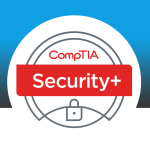General description of the training program
The training program (Cyber Security) is designed in accordance with the world’s trend towards increasing electronic security for users and countries and saving data. This program includes developing the trainee in securing the internet from intrusions in addition to securing all electronic devices used with protection systems from malicious programs and their spread. The program also creates the methods used in securing users and their devices, in addition to using secure protocols in communication processes. Furthermore, the program reviews the most important methods of securing and encrypting payments in order to protect them from any dangers resulting from pirated electronic attacks.
The general objective of the training program
Training participants on the latest cybersecurity systems and methods for institutions and individuals.
Detailed objectives of the training program
Introducing the best standards and applications used in the field of cybersecurity.
Introducing all security controls that are used to protect information and maintain computers.
Introducing the methods of securing payments and protecting the various digital banking services.
Identifying the elements of information security that operate on confidential systems and protocols.
Understanding the standards and requirements of PCI DSS to secure electronic payments.
Information security and risk management
Information Security Governance in the Information Technology Governance Framework COBIT 2019 COBIT 5.
Governance, risk management, and compliance.
The most recent cyber attacks in 2020-2021 (reasons and means of protection).
Concepts and technology of information security.
Information security governance standards.
An overview of the information security strategy.
Infrastructure insurance
International Standard for Information Security ISO 27001:2013.
Defining data security controls.
Assessing and identifying weaknesses in web-based systems – mobile systems – embedded devices.
Defining and applying security controls in software development environments.
Integrating cyber security into the software development life cycle (SDLC).
Applying the principles of secure design in network architectures.
Information security and its impact on operational business continuity
Application of encryption and electronic signature.
Cloud security.
Participate in Business Continuity Planning (BCP).
Implementing PCI-DSS Electronic Payment Security Standards.






